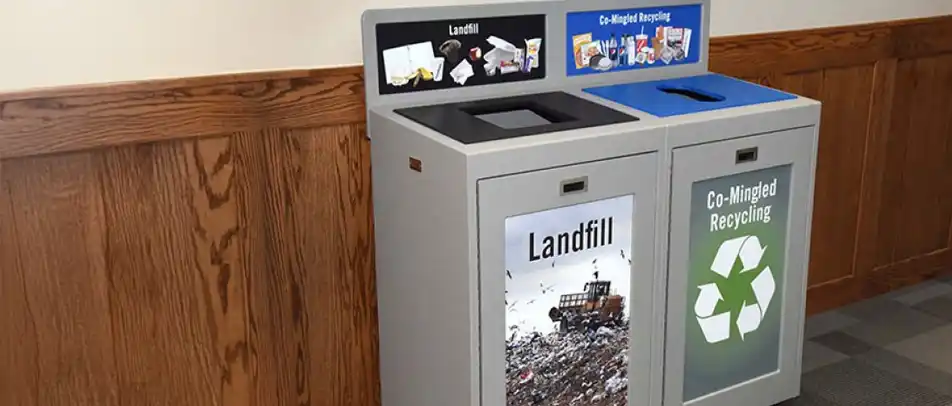
If running a small business is not challenging enough, add sustainability initiatives to the mix, and you’ll be setting you up for a while. The good news: companies like yours have been very successful in dealing with these challenges.
Below are the 5 top challenges people cite for not putting sustainability objectives into place:
- Lack of funding
- Don’t have the time
- Push back from employees
- Which sustainability initiatives make sense
- Company culture doesn’t support sustainability
Introducing Sustainability Initiatives
Introducing sustainability initiatives can be overwhelming. Here we look at the 5 challenges mentioned above and discuss strategies you can use to overcome them.
Anything worth doing takes time. These are not quick fixes, but they will help you work through those challenges and move you towards achieving your sustainability goals.
Strategy #1: How to Overcome the Lack of Funding
Projects that provide immediate benefits and results are the most gratifying and encouraging. By starting with these types of initiatives, you increase your visibility, establish credibility, and demonstrate the business case for sustainability initiatives.
A great example would be replacing all lighting with energy efficient lighting; your energy bill would immediate go down and rebates may also be available.
This is a great way to free up some money. By reinvesting the savings into your next initiative, you will be demonstrating a true level of commitment that can later help you secure additional funding for future initiatives.
Many utilities and organizations, as well as other organizations, can provide financial aid:
- 0% Loans from Peer-to-Peer Platforms
- Angel Investors
- Crowdfunding – Investment-Based
- Crowdfunding – Reward/Donation-Based
- Impact Investment Funds
- Loans from Community Banks
- Loans from Community Organizations & Institutions
Strategy #2: How to Create Time to Work on Initiatives
Rome wasn’t built in one day. Identifying initiatives that best align with your business goals can produce a significant impact as well as a good return. Plus, you’ll be able to prioritize more effectively.
Next, build or summon your green team; get their input on how best to share the duties involved in the implementation of your green initiatives
Lastly, and this can be the most challenging, analyze what people are already doing and come up with ways to integrate sustainability.
A perfect example would be the HR Department. They spend a lot of time onboarding new employees. How can sustainability be integrated? Here’s one idea:
- Sharing sensitive documents via Google Docs or Dropbox would eliminate a lot of paper shuffling, lost documents, forgotten documents, etc. Cloud storage costs vary depending on the size of your organization and the size storage you will need. However, in looking at the big picture, there is potential for large savings.
- The new hire documents can be filled out and filed on the cloud, eliminating paper files, saving paper and ink costs, eliminating the need for costly fireproof filing cabinets. This means you don’t need as much office space, all leading to a smaller carbon footprint.
Sustainability should be a way of thinking that takes into consideration the environmental and social impact of one’s actions.
Strategy #3: How to Reverse Employee Push back
Wishing your employees were more engaged isn’t going to make it happen; you need to give them something to get excited about that creates opportunities for engagement.
The three most important elements that help create true motivation are:
- Autonomy
- Mastery
- Purpose
By encouraging your employees’ autonomy in the creation, implementation, and execution of your sustainability initiatives, not only will they master those skills, but they will also develop a greater sense of purpose. Forming a green team is one of the best ways to achieve this.
Challenge #4: Which Sustainability Initiatives Make the Most Sense
One of the most highly recommended approaches is to first learn as much as possible by becoming Green Business Certified and B Corp Certified. What you will learn through these certifications will provide you with a good foundation on which to build your sustainability initiatives.
Challenge #5: Company culture doesn’t support sustainability
Culture change takes time. The key here is to educate and engage your employees. Get them motivated!
Three things should happen to change your company culture successfully.
- Firstly, you will need to convince top management—this is key — the rank-and-file need to know that upper management is on board.
- Second, ensure your initiatives are company-wide as this too will help boost employee engagement.
- Lastly, provide sustainability training to employees—the more they understand about your initiatives, the more likely they are to support your efforts.
























































































 Three Ways to Engage Teams and Clients to Maximize Your Recycling Program Engagement
Three Ways to Engage Teams and Clients to Maximize Your Recycling Program Engagement  How to Integrate Accessibility Into Your Sustainability Planning
How to Integrate Accessibility Into Your Sustainability Planning  Why Park Benches Can Promote Workplace Well-Being
Why Park Benches Can Promote Workplace Well-Being 
